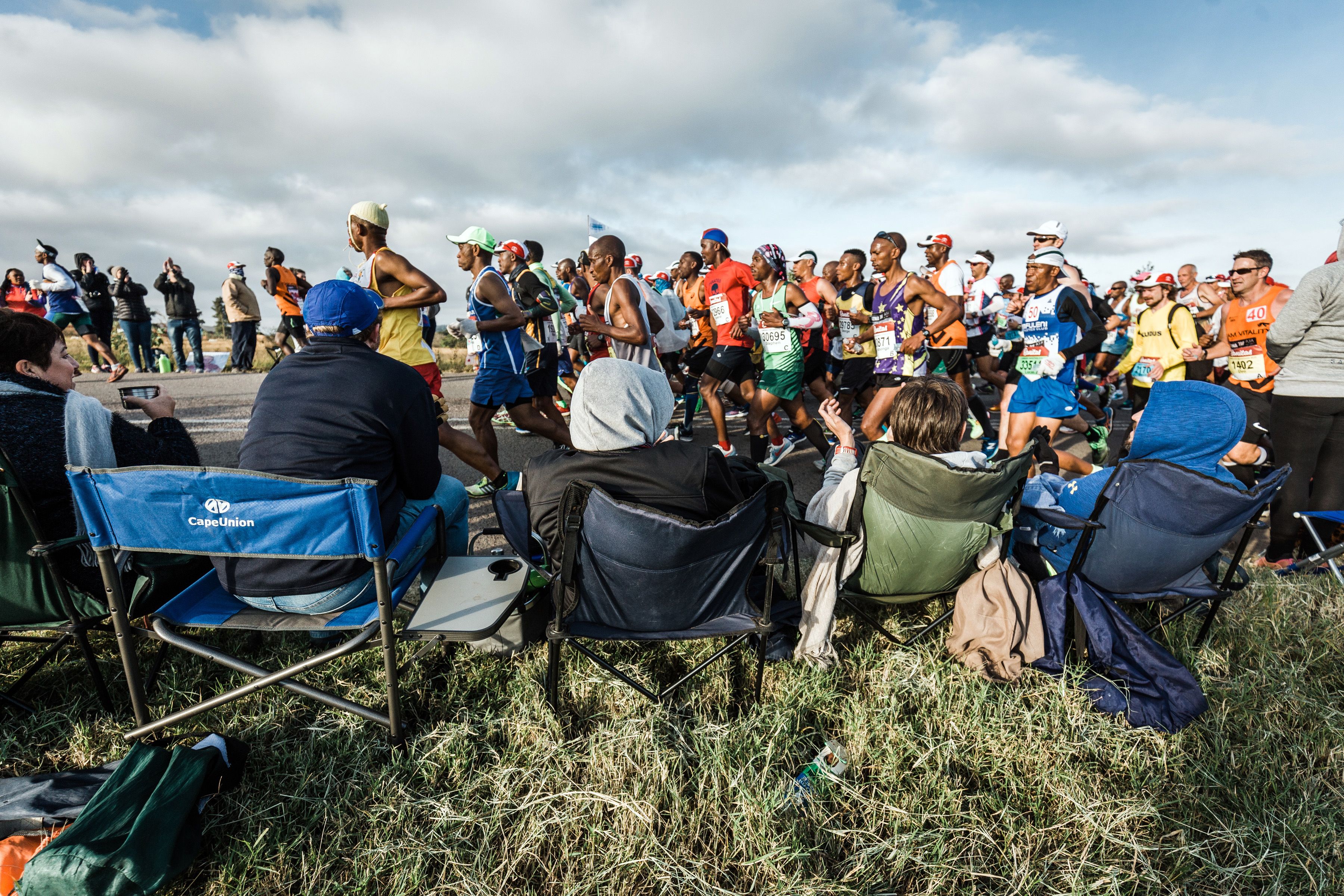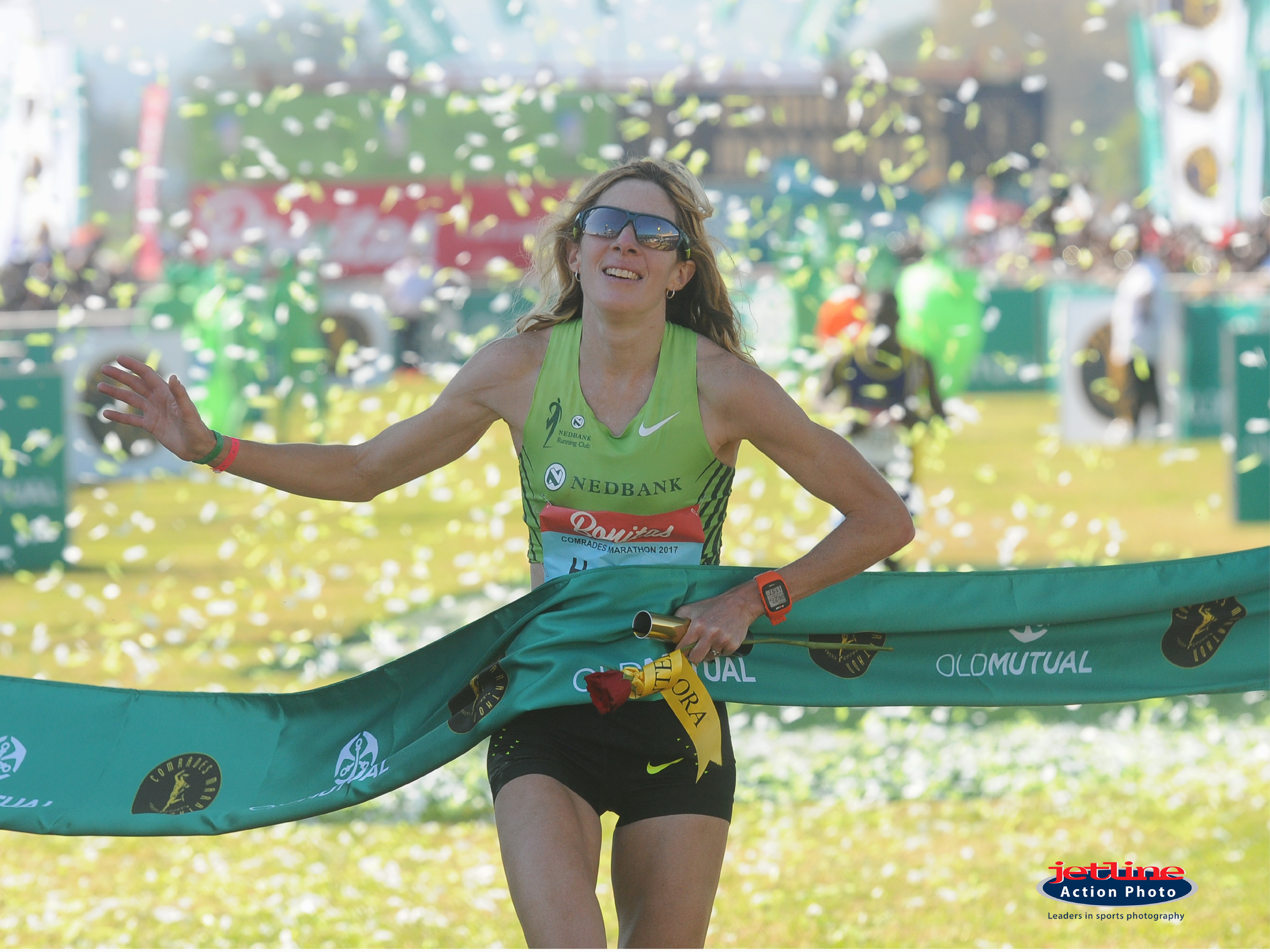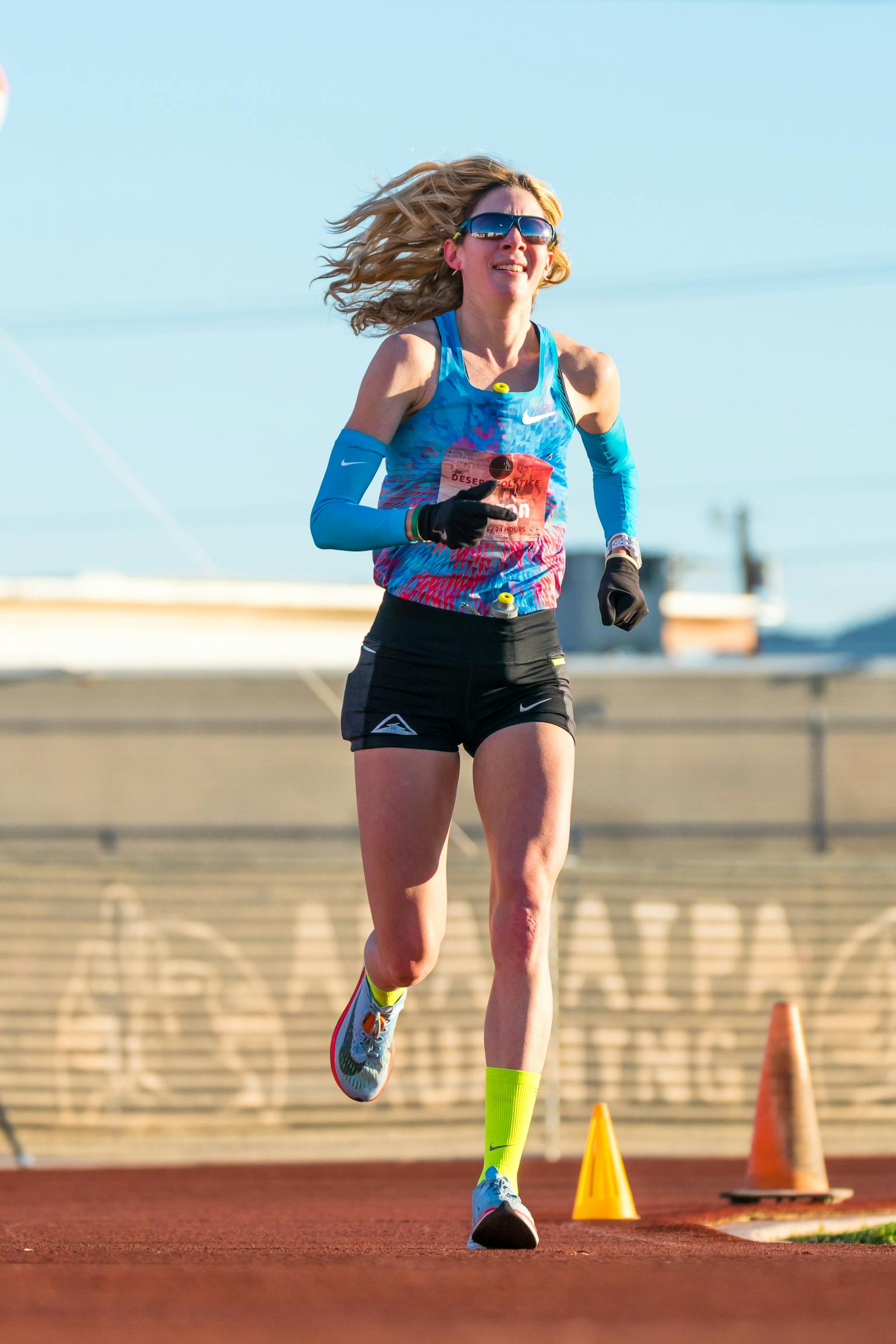
The Will to Endure:
Women, Ultras, and
South Africa’s 90km Comrades Marathon
WORDS BY CHERIE TURNER
PHOTOGRAPHY BY DERRICK LYTLE AND GETTY IMAGES
In early 2015, I stood in legendary ultra runner Ann Trason’s guest room, filled with memorabilia from her storied career, and I fixed on a photo of her with Nelson Mandela. It was from one of her two victories at Comrades, the world’s oldest and largest ultra-distance race. I wondered what it was like to meet such an inspirational leader at an event that has become a symbol of unity for South Africans.
Ann, who has won the Western States 100-mile Endurance Run 14 times and is considered by many to be the best ultra runner in the history of the sport, prefers to make statements through her running. She told me she hadn’t known what to say to Mandela, but she was clear on one thing: “Comrades is magical. Run it if you can.”
My husband was in. I, however, was not. Comrades, a 55 mile race between the cities of Durban and Pietermaritzburg, felt too much for me. Still, I was intrigued. I studied the history and cultural significance of the race, and I started telling podcast stories of other women’s Comrades experiences. And through all that, I repeatedly heard, “You cannot really understand Comrades until you run it.” I got as close as possible to running it, without actually running, as a spectator for my husband in 2019. It was then, on the roadside, watching thousands upon thousands of runners pass, that I knew I had to run it. Three years later, on August 28, 2022, that’s exactly what I did.
I ran Comrades and it changed my life.
For many women, ultras appear to be a logical next step in their running journey. “Moving to ultras in my mid-30s felt like a natural progression after spending many years running marathons,” says 2017 Comrades champion American Camille Herron. “It opened me up to a whole new set of goals and challenges.”
For those compelled to meet such a challenge, the reward is like nothing else. “Ultras,” says Manzini, “unleash the power within me to break through limits and help me conquer my fears.” Ultras are a path to formidable confidence.
Getting to the Start Line
Training for and running an ultra is a challenge you take on in pieces. Lindsey Parry of Coach Parry, the official Comrades coaching service since 2006, advises seasoned runners to slowly build from where they are, with no big, sudden changes to training. He also highly encourages strength training.
For athletes who have little to no running background, Parry encourages making Comrades a two-year goal. In South Africa, you’ll regularly hear, “You’re not a real runner until you’ve run Comrades.” For many, getting into running equates to aiming for Comrades, even for more casual athletes.
For women, thanks in large part to the work of Dr Stacey Sims, there’s a growing emphasis to focus on short, fast workouts, and strength training, even for ultras. Dr. Sims also encourages women to be moderate in their long runs. This approach even works for some at the elite level, as Herron discovered. “When I first got into ultras, I thought I needed to ‘do more.’ I was doing lots of long runs and extending them up to about 30 miles. I felt tired and like it took the zip out of my legs,” Herron says. “It was when I went back to marathon training in 2015 that I got my mojo back and started breaking records. I only go 18 to 22 miles for my long runs, one or twice a month.”

The thinking goes, women don’t need to emphasize training endurance because we’re already naturally built for it. We do see that the gender performance gap gets smaller as races get longer, and there are many examples where women have won ultras outright. However, this is uncommon, and at a race like Comrades, the gender gap is significant.
When it comes to recovery, the older women get, the more we need. Parry has added extra weeks to training programs for older women so that there’s enough training load as well as enough rest.
Depending on your goals, approaches to training vary widely. To become a Comrades finisher, you have to complete the race within a strict 12-hour cutoff time – a tremendous achievement. That’s been Pat Freeman's goal, and running three days a week has been enough to get her there an incredible 31 times! Ten-time finisher and Comrades Canadian Ambassador Cathy Hopkins trains up to five days a week, and says her best finish came when she cross-trained a lot on the bike.
For those looking to be among the elite, you have to expect a lifestyle shift. “You ought to prepare to say goodbye to friends and family for a while,” Parry simply states. “The training and recovery is that demanding.”
Mental preparation is undeniably important, as is training your gut, practicing eating on the go to understand what your body can tolerate while on the move. It’s also very helpful to know the course.
The Spirit of Comrades
Then, you run.
At Comrades, the course is relentlessly hilly and grueling. On the flip side, the support is beyond measure. From the crowds to aid stations to fellow runners, Comrades has cultivated its own spirit. It’s steeped in South Africa’s difficult, divisive, complex history. On race day, Comrades unites us through shared struggle and unbreakable will. For Manzini, it “means being selfless, encouraging others, and assisting them to achieve their goals.” Hopkins often witnesses the way encouraging exchanges among strangers can become so meaningful and how people even give up their own race goals to help another runner. Over the hours of this event, that spirit sinks in. I felt it like a force of will that, like Ann said, is truly magical. And if you let it, it will change your life.

